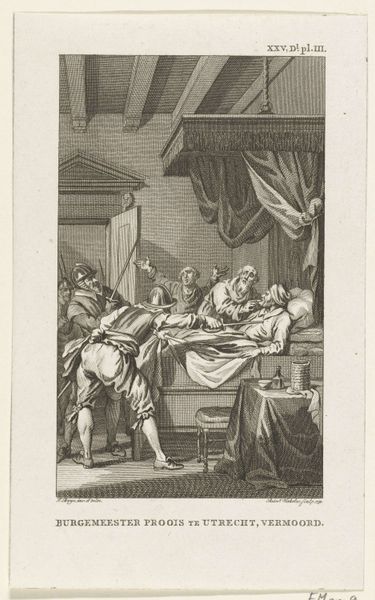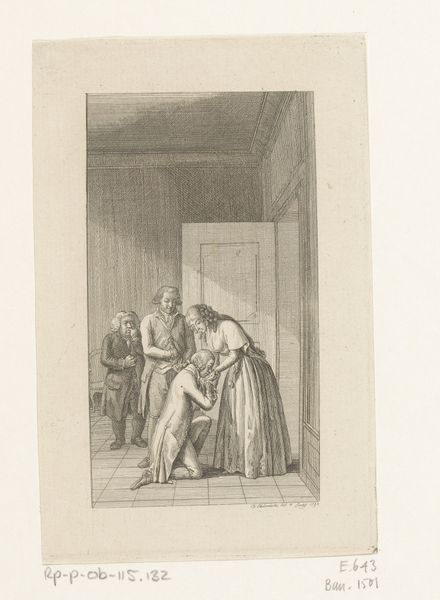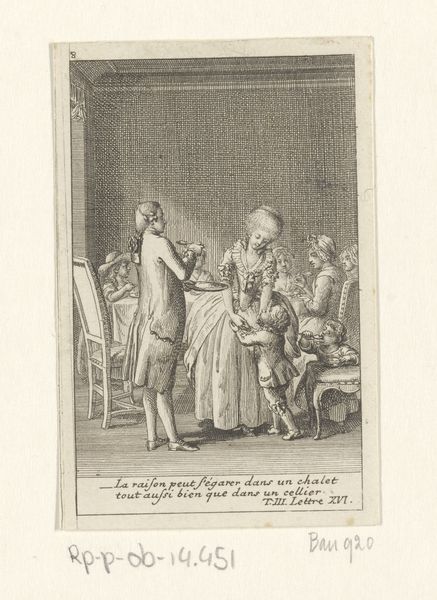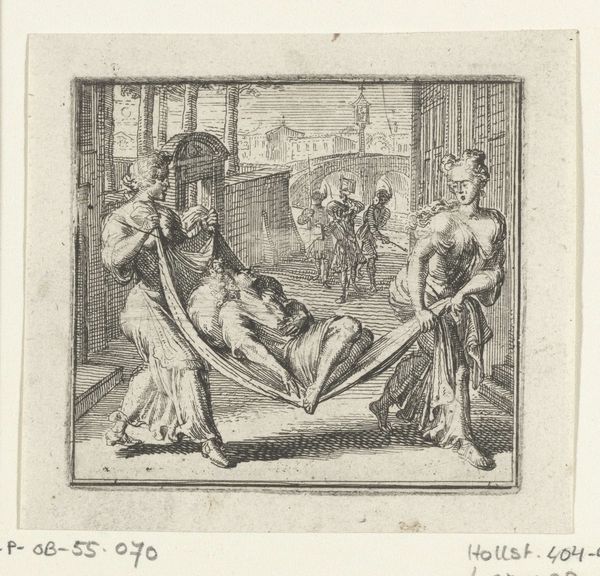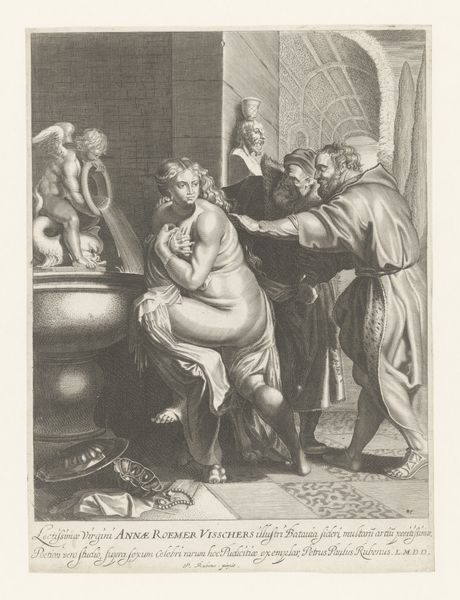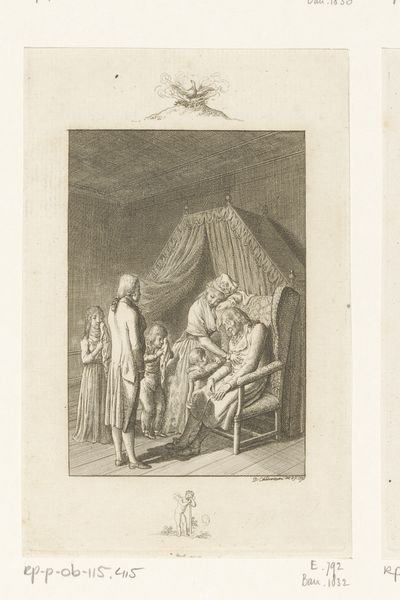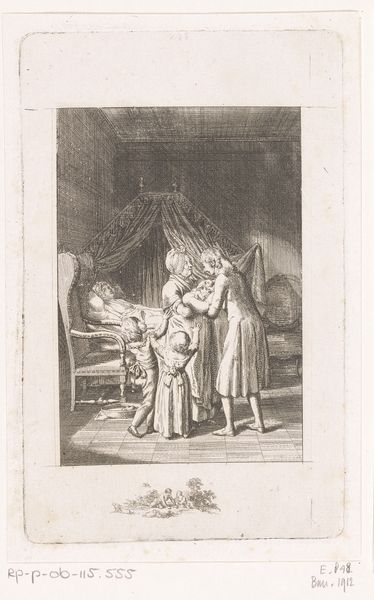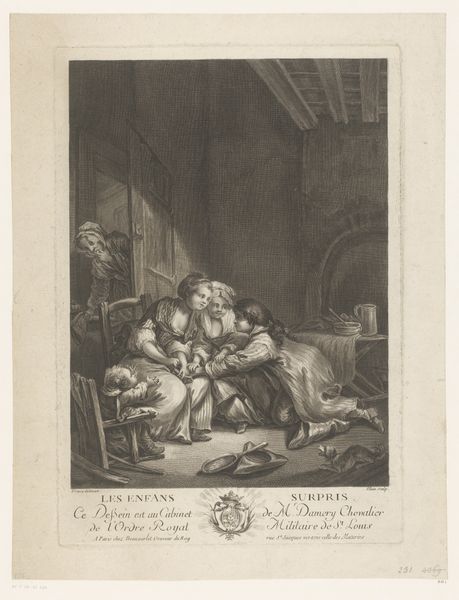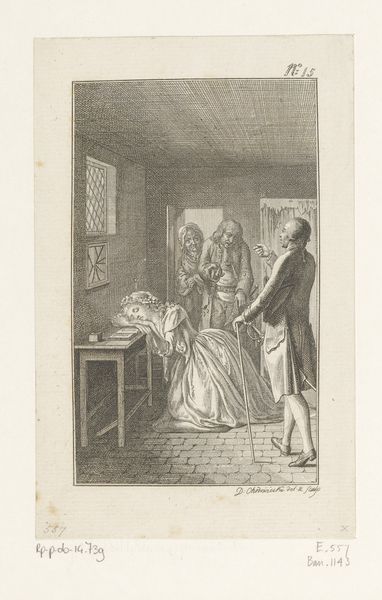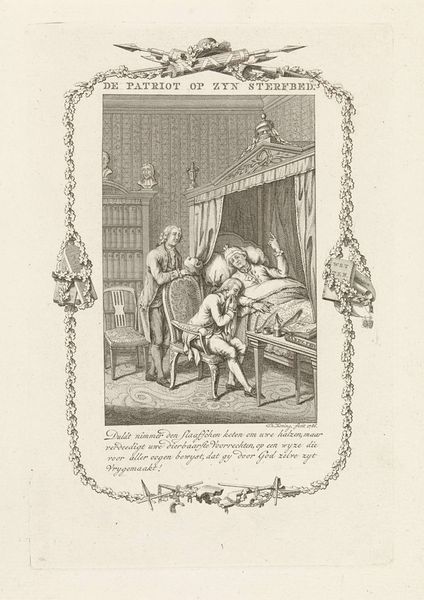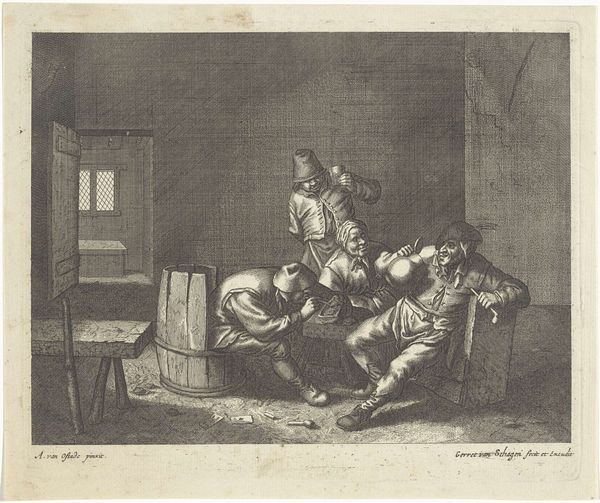
Dimensions: height 87 mm, width 51 mm
Copyright: Rijks Museum: Open Domain
Editor: This print, titled "Lord Bomston op zijn knieën voor St. Preux," was created by Daniel Nikolaus Chodowiecki in 1782. It's an engraving, and it gives me a slightly uncomfortable feeling, like witnessing a very staged, possibly insincere, moment. How do you interpret this work? Curator: That discomfort is valid, and perhaps even intentional. This scene is rich with encoded meanings reflecting 18th-century social anxieties and moral values. Look at the central figures: a man kneeling, seemingly in supplication, while another extends a hand. What emotions are conveyed by the kneeling figure, and how does it contrast with the men looking on from the left? Editor: The kneeling figure seems… ashamed? Desperate, maybe? And the onlookers do appear rather judgemental. There's not a lot of warmth there. It definitely feels performative. Curator: Precisely. Think about the visual language Chodowiecki employs. Kneeling, a gesture heavy with connotations of subservience or piety, here is perhaps deployed ironically. Is this genuine respect or a coerced act within a complex social dynamic? What cultural narratives around wealth, power, and morality might the image be playing on? Editor: So, it’s about questioning these traditional symbols, right? Showing that maybe things aren't always as simple as they seem. That kneeling isn't necessarily about respect? Curator: Yes. Consider this print within the broader context of the late 18th century: the Enlightenment, the questioning of established hierarchies. Chodowiecki is prompting us to critically examine these rituals and the power dynamics they represent, especially looking at cultural assumptions surrounding forgiveness. What emotional undercurrents do you think might be there, under the surface? Editor: That makes so much sense. I see it so differently now. I'm struck by the idea of questioning power through these very formal compositions. Curator: Exactly. These older images can mirror our current cultural environment if we look at them inquisitively. They invite critical evaluation through what appears very stylized and formal at first glance. Editor: Thank you; this was very helpful to unpack! I can see this seemingly simple genre-painting is an entire interrogation about performativity of class.
Comments
No comments
Be the first to comment and join the conversation on the ultimate creative platform.
